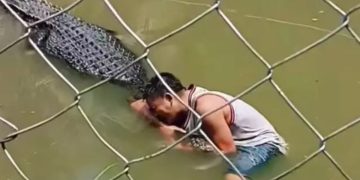For years, Disney films have been pushing the envelope when it comes to some fairly mature content in their children’s films. However, people are especially offended when it comes to the newest Pixar film, Turning Red. The film explores puberty, periods, and generational trauma, which may sound too deep, until we remember that other Disney movies have gone much further. If people are planning to come for Turning Red , there are more than a handful of older Disney movies that they’ll have to come for first. We have no idea how these movies even made it on the Disney roster in the first place.
Parents don’t like “Turning Red’s” period talk.
For some families, discussions of periods and puberty are private and even taboo, so having them openly explored in a children’s movie feels kind of wrong. Even though conversations about menstruation should be normalized, it feels awkward for certain parents to have it show up in a Pixar movie. This, unfortunately, creates shame around something that shouldn’t be scary. Especially, considering other Disney movies have introduced some truly adult content compared to periods.
A man attempts suicide in “The Incredibles”.

Things get pretty awkward when Mr. Incredible saves a man attempting to kill himself by jumping off a building, and then get sued for it. This entire scene is short, but introduces suicide to kids and even delves into the controversial debate on whether it’s a human right to choose to die, which is a lot for adults, let alone kids.
“The Hunchback of Notre Dame” was just wrong.

This Disney film was too adult for some adults, let alone children and teens. When Archdeacon, Claude Frollo, tells feminist gypsy, Esmerelda, that she has to sleep with him or be burned alive at the stake for sexually tempting him, we all get more than a little traumatized. Plus, there’s a bit of murder, violent death scenes, songs about lust, being locked in a tower for being ugly, and much more.
“Sleeping Beauty” has a consent problem.

It will forever be a big “no” when it comes to kissing a woman while she’s in a coma, yet Sleeping Beauty somehow romanticizes it. Without consent, there’s no happily ever after — just sexual assault. Yikes.
“Dumbo” is pretty racist.

The crows in Dumbo are meant to represent stereotypical Black men that are loud, immature and just cringe-worthy. The leader of the crow group is even called “Jim Crow”, which referred to the racist laws reinforcing segregation until 1965. When the movie arrived to Disney +, Disney issued a warning about its “racist content” instead of just removing the scene. This isn’t just wrong for kids to see, it’s just messed up in general.
“Peter Pan” is also racist.

Turning Red is about cute red panda’s that represent coming of age, while Peter Pan introduces the scene and song called, “What Makes The Red Man Red,” which is about demeaning and stereotyping American Indigenous tribes. It’s incredibly racist. Periods and puberty are natural and important, but racist depictions are unacceptable. This isn’t just too adult, it’s too offensive. Plus, there’s the whole pipe-smoking scene with the little kids getting high.
“Beauty and Beast” romanticizes Stockholm syndrome.

Yup, just a love story between a furry beast that traps a young human woman in a castle. It’s pretty weird to be showing kids this kind of relationship, yet it’s considered a beloved classic that makes Stockholm syndrome somehow romantic.
Aladdin gets pretty raunchy

Parents should have been turning red when they watched 15-year-old Princess Jasmine seducing grown-man Jafar in Aladdin with a sexy outfit and voice — then kissing him. We can’t imagine how everyone didn’t need therapy after this one.
“Lilo and Stitch” was an emotional rollercoaster.

This is one depressing story that’s a lot for kids to process. Lilo’s parents die in a car crash, then her older sister, Nani, tries to raise her and stop CPS from taking Lilo into custody. Stitch is basically an outcast that doesn’t know why he was created or where he belongs. Periods seem pretty tame compared to people dying from car crashes in Disney movies.
In “Toy Story 3”, they’re basically ready to die together.

We don’t know any other way to say this: the toys hold hands before being thrown into an incinerator. This is one of the darkest scenes we’ve watched in a kid’s movie, as the toys are tricked by the evil bear, Lotso, and, apparently, the price is a fiery death. Luckily, they don’t die, but still.
“The Lion King” keeps murder in the family.

Puberty is kind of small fries considering that Scar killed his brother, Mufasa, in one of the most emotional scenes in Disney history. The betrayal still burns a hole in many of our souls when Scar pretends to save his brother and then makes him fall into a hoard of animals to get trampled. Then, Scar convinces Mufasa’s son, Simba, that his father’s death was his fault, which makes the young lion go into hiding. This movie is all about physical and emotional trauma and violenc — -and it also explores puberty and some lion lovin’!
Clayton is hung by a vine in “Tarzan”.

While most people hope that the evil villains have to face consequences, maybe having Clayton hung to death by a vine is a bit much for children. Kids may hit a snag when it comes to processing this violent death scene. It was basically a noose made out of a vine.
“The Alice in Wonderland” drug trips.

From the hookah smoking caterpillar to the “special” mushrooms that are consumed, Alice is both exposed to and given some power hallucinogenic substances. We don’t imagine that’s the easiest thing to explain to kids wondering just what in Wonderland is going on.
Ursula’s trapped souls in “The Little Mermaid”.

It’s more than a little disturbing to see the greenish-gray shriveled up blobs that the sea witch Ursula turned mer-people into when they were cheated in one of her deals. They’re sad creatures that are actually really creepy.
“Mulan” certainly has its moments.

The song ‘A Girl Worth Fighting For’, a rather cheery song, is abruptly stopped when the crew comes upon a destroyed village filled with fallen soldiers. There’s also the moment when Mulan’s secret is revealed and she’s nearly executed before being abandoned in the snow.
In “Finding Nemo”, Nemo is the last surviving egg of a bunch.

Not only is there a large group, potentially hundreds, of eggs shown at the beginning, but Nemo’s mother, Coral, is also there. She and the rest of Nemo’s siblings are eaten by a barracuda, which is a brutal way to start any movie.
It also just has some scary moments. The sharks? The boat? Darla?!
The image of Earth that the beginning of “Wall-E” paints is pretty grim.

Yeah, it’s the point of the movie, I know, but it’s still a very scary thing for kids to see. Especially before we really understand what happened to the humans that once lived there, before that, we have no idea where they went!
“Atlantis” featured a pretty brutal death.

Does anyone else remember when Captain Rourke was turned into a crystalline beast only to end up in a helicopter blade where he was chopped into a million pieces? I do. I do, vividly.
Also, are we forgetting the entire intro to “Up”?

Lauded as one of the saddest Disney (or Pixar, Disney Pixar) moments of all time, it depicts Carl and Ellie fully decorating a nursery before Ellie suffers a miscarriage and falls into a depression afterward. That’s some heavy stuff for young watchers!
Let us know what you think of the Disney movies that are deemed too mature for kids compared to the complaints Turning Red is getting. Do you think that Turning Red goes too far compared to other Disney films?

















































